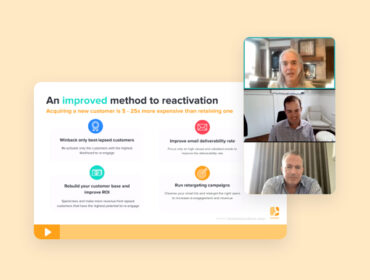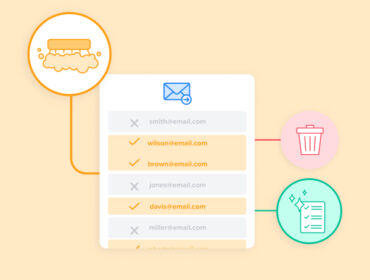The times, they are a-changin’. Email can help.
As Bob Dylan once famously sang:
Come gather ’round people // Wherever you roam // And admit that those cookies // Are soon to be gone // And accept it that you // Could be back at square one // If your time to you is worth savin’ // Then you better start getting // In that first-party zone // For the times they are a-changin’
Okay, you caught us. He didn’t actually say that (and forgive us for butchering that classic song). But if he had said it, he would’ve been making a great point: First-party data is the new law of the land. As third-party cookies are phased out, publishers are rethinking how they track and target customers across the web. That means leaning into the value of first-party data by investing in direct-to-consumers channels that enable its activation and continued collection – like email.

As LiveIntent VP of marketing Nick Dujnic recently said in a MediaPost interview (this quote we did get right):
“Publishers are realizing the power of their email assets – it’s the first-party, logged-in audience.” He added that email can “drive immediate revenue and is a cornerstone of addressability and identity resolution.”
If anything, the loss of third-party cookies is a blessing in disguise, giving publishers the push to take control of their own data and stop relying on data locked behind walled gardens. By combining their email newsletters with a robust first-party data strategy, publishers can build even more valuable relationships with advertisers.
Here’s a closer look at why the changin’ times are so good, and why email is the key to navigating those changes.
There’s tremendous opportunity for growth
Publishers have major opportunities for growth and success in a world without third-party cookies. That’s because they have a wealth of access to first-party data at their fingertips, like their subscriptions, which they’re already using to build customer relationships and deliver premium content. (Oh yeah, and to make up for declining ad revenue.)
According to a 2020 LiveIntent study, 29% of publishers said the email address is the most significant asset for navigating the death of the third-party data, and 25% said it’s the first-party data they collect.
Just look at how publishers are already prioritizing their subscriptions and email. As the MediaPost article noted, publisher Gannett set a goal to drive 10x digital subscription growth within five years. The New York Times also plans to reach 10 million subscriptions by 2025, up from 7 million in 2020, with digital subscriptions carrying the brunt of that work.
First-party data provides personalization and security
Publishers can then use first-party data to monetize their content and build targeted campaigns with advertisers. With this owned audience data at their fingertips, publishers can better attract brand partners to their inventory and work together to reach direct, opt-in audiences with personalized content – across both their website and email properties.
As our study found, one-third of survey respondents said email is important for both identity and monetization. That’s because email, much like social media, is a logged-in environment that they can monetize with programmatic ads delivered in real time and tailored to readers’ interests.
By leaning-in on email newsletters, publishers have the opportunity to securely level up their whole data strategy and build better customer experiences around trusted content their readers have opted into.
Brands are building their first-party data strategies too
Publishers aren’t the only ones who need to collect first-party data – brands are getting on board, too. In the past, brands primarily used their first-party data for targeting audiences and measuring campaign performance on third-party platforms. Now, brands are pivoting to launch their own email newsletters and build media networks so they can start maximizing the value of their first-party data themselves.
Target, for instance, launched Roundel in 2019 to help large advertisers reach customers with personalized campaigns. In the same year, Walmart started developing its own self-service ad platform to rival Amazon’s. And in 2020, Microsoft announced its self-service platform to connect brands with ad real estate on major retailers’ e-commerce sites. These new platforms prove how much retailers understand the importance of first-party data as an asset for increasing revenue.
Publishers can make the most of their assets – starting now
Publishers need to maximize all their assets as the landscape becomes more competitive and more businesses catch onto the value of first-party data strategies. But they have to get started now. As our survey found, 39% of publishers said they have no plan in place for navigating a world without third-party data. And of the 61% who do have a plan, almost half said they’re not confident in it.
Basically, there’s no time to wait. Third-party cookies have already been disabled on Safari and Firefox browsers. And their upcoming demise on Chrome will be the final nail in the coffin. Publishers without a first-party data strategy on-hand will be left stranded and struggling to catch up. And they’ll have missed an opportunity to get in on the ground floor of a data revolution – one that’s giving them the gift of increased revenue, improved consumer trust, and robust email strategies for sustainable growth.
If it’s alright, we’ll end this with another blasphemous Bob Dylan parody (you know, from that parallel universe where he sang about marketing instead of cultural revolution):
Come marketers, publishers // Please heed the call // Don’t depend on those cookies // Or gardens with walls // For he that gets hurt // Will be he who has stalled // There’s a battle outside ragin’ // But the good news is // First-party data for all // For the times they are a-changin’


